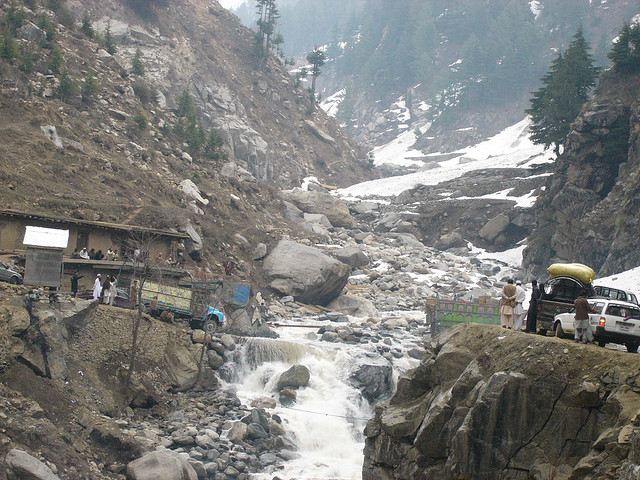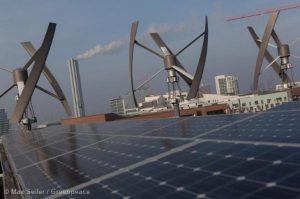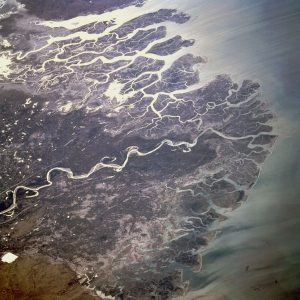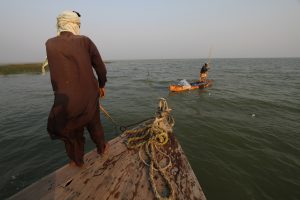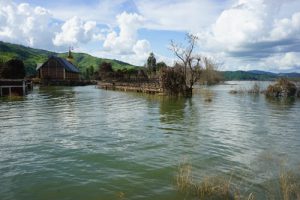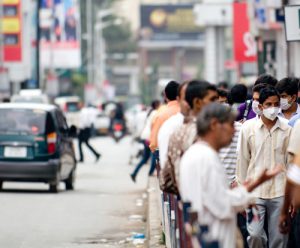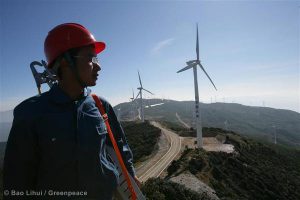High temperature and heavy rain created havoc in the remote Chitral Valley in the Hindu Kush-Karakoram-Himalayas this July. At least three lakes that had formed at the end of glaciers either overflowed or burst their banks. With streams and rivers already swollen with heavier snowmelt and rain, it all came down in a series of flash floods.
The neighbouring Bagrot Valley was just as vulnerable, sitting in the path of numerous mountain streams and five glaciers, three of them hanging right over the valley. But the flash floods caused relatively little damage here and no one was killed.
The reason: Residents have formed ‘hazard watch groups’ to monitor the state of the surrounding glaciers and to send out a warning at any sign of a glacier lake overflowing or bursting its banks. On being warned, everyone moves to shelters that have been built on higher ground – usually a mosque or a hilltop home of a rich resident.
Global warming has multiplied the chances of these flash floods – technically called glacial lake outburst flood (GLOF) – in the entire Himalayan range. Most glaciers end at fields of rubble, known as moraine. The water melting at the end, or snout, trickles through this moraine as streams above and below the ground. The streams keep joining up and eventually form the beginnings of a river at the bottom of the valley.
But as glaciers now melt faster due to global warming, the trickles are not enough to drain the snout. So a lake forms, right there in the unstable moraine, and it keeps getting bigger every year. In a particularly hot summer, or after heavy rain or snowfall, the lake overflows or bursts through its banks, causing a flash flood right down the valley.
Risks reduced
Bagrot Valley farmer Mazhar Hussain was working in his fields when he heard the warning from the hazard watch group trained by the Pakistan Meteorological Department (PMD). Without the warnings, the flash floods may well have killed people, says Hussain, who is associated with a local NGO, the Dobani Development Organisation.
Material damage was also minimised, thanks to a joint project started by the Pakistan government, the United Nations Development Programme (UNDP) and the United Nations Adaptation Fund.
Pakistan’s Ministry of Climate Change is implementing the project while UNDP is providing technical assistance and oversight.
The project has been particularly successful in the Bagrot Valley because it found a community already observing and dealing with the effect of climate change on their farms and homes. With money from the project, they built gabion walls and check dams that at least tempered the fury of the flood.
In Bagrot, a valley of 452 square kilomotres, residents of 14 villages know that they are directly threatened by Hinarche, Burche, Gutumi, Rakaposhi and Yune glaciers. Since they herd sheep and yak and use the high pastures during summers, they also know the extent the lakes are expanding at the snouts of the glaciers.
The GLOF project manager Zahid Hussain told thethirdpole.net these five glaciers are not the only ones threatening Bagrot Valley. There are at least 11 glaciers in the upper reaches of which nine are facing the valley, which is also threatened by avalanches and hill torrents, he said.
Ghulam Rasool, PMD director general, said as part of the project, automatic weather stations with rain, snow and river-level gauges had been installed, and volunteers of the hazard watch groups trained to read the instruments and provide a warning if necessary. The shepherds who take their livestock to the high altitude summer pastures have also been trained to look out for cracks developing on the hillsides and monitor them for any widening.
The volunteers also ensure the designated safe havens are equipped with emergency supplies, have obstruction-free pathways, food, blankets and so on.
The GLOF project management has signed agreements with NGOs such as Dobani Development Organisation to set up a comprehensive community based disaster management system that can be used as a model in other places as well, said project manager Hussain. Disaster preparedness drills and the setting up of an emergency cash fund is part of the system. The NGOs are now going around distributing emergency kits and making sure everyone’s mobile phone has the number from the warning will come.
A disaster management plan for the entire valley is also being prepared.
The limits of adaptation
But there is a point beyond which such adaptation measures do not work. The flood was just too strong – it swept away a 25-year-old bridge, damaged irrigation channels and most important, cut off the road between the valley and the world outside.
Now Bagrot farmers have harvested their fruits and potatoes but cannot get it to market.
It is ironic, because the farmers shifted from wheat to potatoes as the variety of wheat they had been planting was unable to cope with the changing climate. So now everyone in Bagrot grows potatoes, which fetches a higher price than wheat. In recent years, they have become richer. But now they do not know what to do, while their potatoes turn mouldy.
